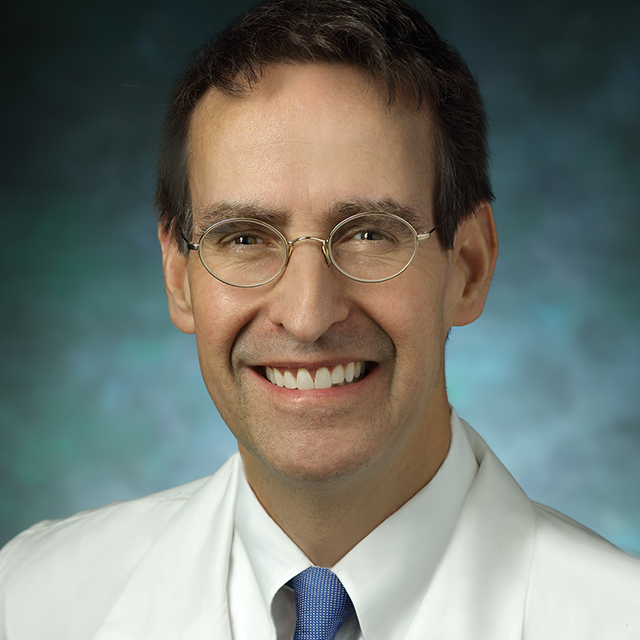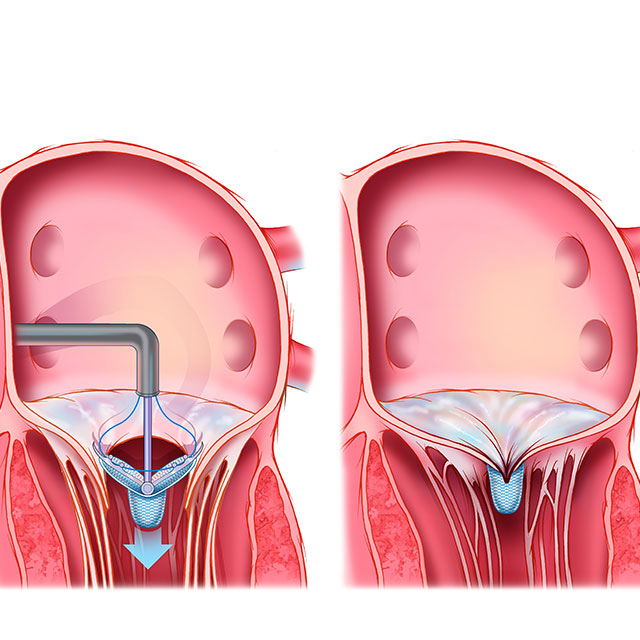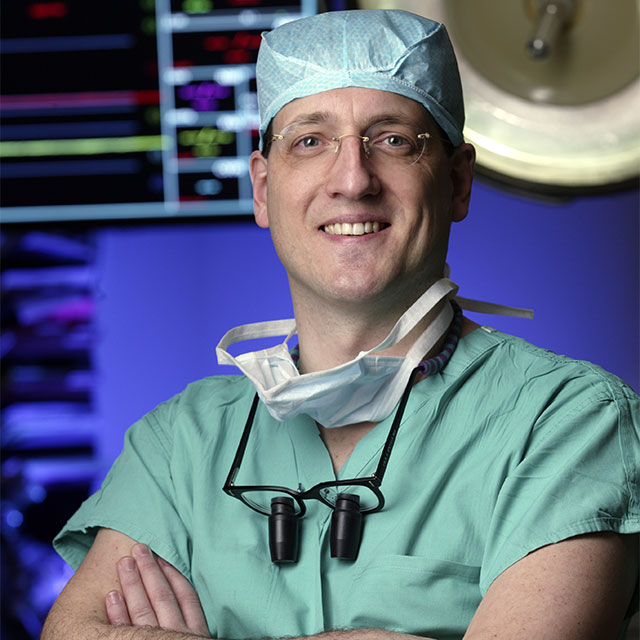New Co-Director Appointed to the Johns Hopkins Heart and Vascular Institute

James Gammie
It’s hard to say exactly what drew James Gammie to cardiac surgery: the fascination of feeling better a day after his appendectomy at age 13, an influential high school biology teacher or training with the chief of cardiac surgery as a first-year medical student at the University of Massachusetts. Regardless, he was captivated.
“I remain endlessly fascinated by cardiac surgery, and I can’t imagine a better job, especially in academic medicine,” Gammie says. “Every day, I get up and I’m excited to go to work.”
Now, Gammie — an expert in mitral valve repair who performs over 200 procedures each year, and an entrepreneur who has launched four companies — brings that enthusiasm and spirit of innovation to Johns Hopkins. Gammie was named surgical lead and co-director of the Heart and Vascular Institute in April, alongside Johns Hopkins cardiologist Charles Lowenstein.
Gammie comes to Johns Hopkins from the University of Maryland (UM) School of Medicine, where he served on the faculty since 2002 and became chief of the Division of Cardiac Surgery in 2012. During that time, he recruited 14 surgeons to the faculty, established a cardiac surgery program at the UM Prince George’s Hospital Center and strengthened the cardiac surgery program at the UM St. Joseph Medical Center.
Gammie is a prolific inventor of devices for mitral valve repair, and he established a novel operative therapy for secondary mitral regurgitation.
Gammie says he’s excited to grow the Johns Hopkins Heart and Vascular Institute into a best-in-class program in the country, with a focus on outcomes, discovery and education. He favors the concept of a service line structure, in which all staff members are aligned and devoted to the care of cardiac patients, from pre-hospital visits to post-hospital care.
“I believe that disease-focused, multidisciplinary programs provide superior patient care, optimal outcomes, and provide a substrate for clinical and translational research as well as educational opportunities,” Gammie says. He’s eager to work with Johns Hopkins’ biomedical engineering program on new methods to enhance cardiac operations.
Lowenstein says Gammie was selected for his experience and leadership.
“Our selection committee realized that Jim Gammie is a visionary leader,” Lowenstein says. “Jim and I share a passion for clinical growth and clinical excellence, and for teaching and research. This fits in with the Johns Hopkins Health System’s clinical road map to extend our footprint across the mid-Atlantic region.”
The Heart and Vascular Institute will collaborate closely with referring physicians including primary care physicians and cardiologists, Lowenstein says, and it will expand into the National Capital Region, which encompasses Washington, D.C., and surrounding neighborhoods in Maryland and Virginia. Borrowing concepts from the Armstrong Institute for Patient Safety and Quality at Johns Hopkins, the Heart and Vascular Institute will delve into quality improvement projects.
Gammie also is well known for his experience participating in and directing cardiac surgery clinical trials and for his outcomes research, says cardiac surgeon Ahmet Kilic, who met Gammie when Kilic was a surgical resident at the University of Maryland.
“We’re really excited to have him join us,” Kilic says. “He is not only an excellent clinical partner but will help to expand the training experiences for our surgical fellows.”
Gammie received his M.D. from the University of Massachusetts Medical School, and he completed a general surgery residency at the University of Pittsburgh, where he also had a research fellowship in cellular therapeutics and cardiothoracic surgery, and a clinical fellowship in cardiothoracic surgery. Before heading to UM, Gammie joined the faculty of the University of Massachusetts, where he started the cardiac transplantation and mechanical circulatory support programs, and performed the institution’s first heart transplant.

